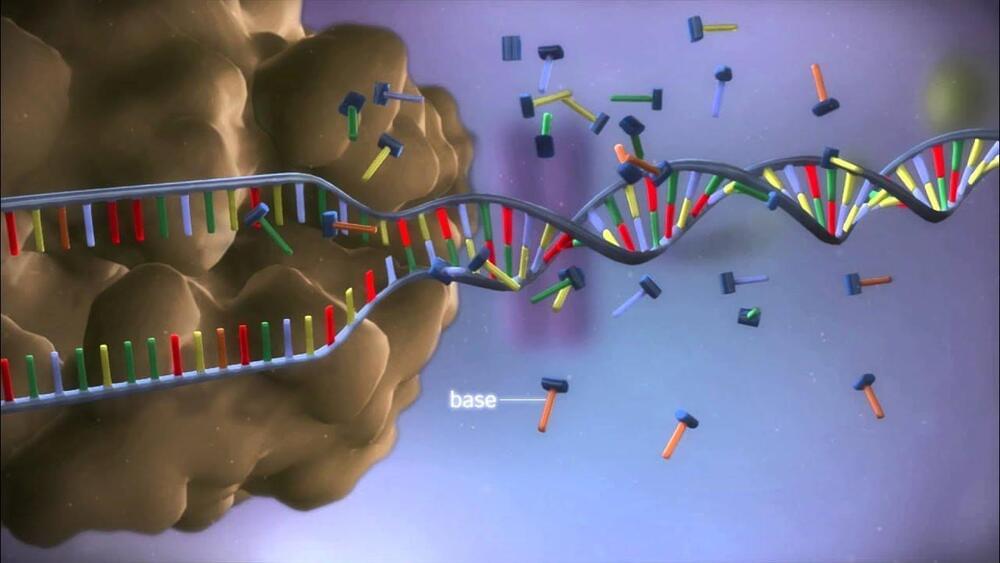We can reprogram our DNA. The nucleus of a cell is not read only. It is actually read and write. Basically, the cell is a programmable device, in response to environmental information.
The templates for protein synthesis are RNA (ribonucleic acid) molecules. In particular, a class of RNA molecules called messenger RNA (mRNA) are the information-carrying intermediates in protein synthesis. Other RNA molecules, such as transfer RNA (tRNA) and ribosomal RNA (rRNA), are part of the protein-synthesizing machinery. All forms of cellular RNA are synthesized by RNA polymerases that take instructions from DNA templates. This process of transcription is followed by translation, the synthesis of proteins according to instructions given by mRNA templates.
The flow of information is dependent on the genetic code, which defines the relation between the sequence of bases in DNA (or its mRNA transcript) and the sequence of amino acids in a protein.
We can send therapeutic messages to the DNA inside the stem cells’ nucleus. DNA sends the information (in the form of nerve impulses) to the RNA molecules called messenger RNA. The transfer RNA synthesizes proteins to carry out the instructions given by messenger RNA templates for the stem cells to become new neurons and cells to replace the neurons and cells that were damaged or destroyed.
This 3D animation shows how proteins are made in the cell from the information in the DNA code.
To download the subtitles (.srt) for this site, please use the following link: https://goo.gl/Ew7l69 and for more information, please view the video and explore related resources on our site: http://www.yourgenome.org/video/from-dna-to-protein
–
Animated by Polymime Animation Company Ltd.
http://www.polymime.com
http://www.instagram.com/polymimestudio
